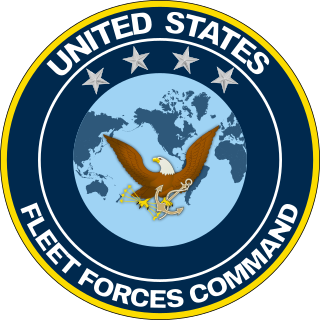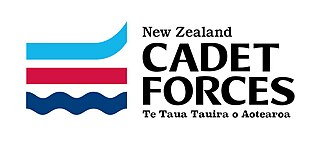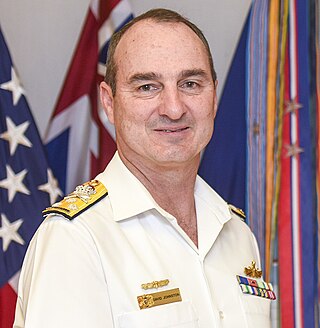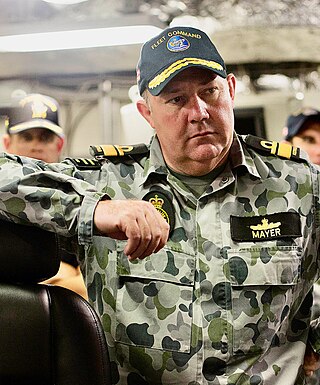Related Research Articles

The Bulgarian Army, also called Bulgarian Armed Forces, is the military of Bulgaria. The commander-in-chief is the president of Bulgaria. The Ministry of Defense is responsible for political leadership, while overall military command is in the hands of the Defense Staff, headed by the Chief of the Defense. There are three main branches of the Bulgarian military, named literally the Land Forces, the Air Forces and the Naval Forces.
The New Zealand Defence Force is the three-branched military of New Zealand. The NZDF is responsible for the protection of the national security of New Zealand and her realm, promoting its interests, safeguarding peace and security, as well as supporting peacekeeping and humanitarian missions. It consists of three services: the Royal New Zealand Navy (RNZN), the New Zealand Army and the Royal New Zealand Air Force (RNZAF), as well as 'tri-service' components. As of June 2023, the NZDF has a strength of 14,996 employees, consisting of 8,669 regular force personnel, 3,260 reserve force personnel and 3,067 civilian members. It is supported by the New Zealand Ministry of Defence (MOD) and is commanded by the Chief of Defence Force (CDF).

The United States Fleet Forces Command (USFFC) is a service component command of the United States Navy that provides naval forces to a wide variety of U.S. forces. The naval resources may be allocated to Combatant Commanders such as United States Northern Command (USNORTHCOM) under the authority of the Secretary of Defense. Originally formed as United States Atlantic Fleet (USLANTFLT) in 1906, it has been an integral part of the defense of the United States of America since the early 20th century. In 2002, the Fleet comprised over 118,000 Navy and Marine Corps personnel serving on 186 ships and in 1,300 aircraft, with an area of responsibility ranging over most of the Atlantic Ocean from the North Pole to the South Pole, the Caribbean Sea, Gulf of Mexico, and the waters of the Pacific Ocean along the coasts of Central and South America.

The Royal New Zealand Navy is the maritime arm of the New Zealand Defence Force. The fleet currently consists of nine ships. The Navy had its origins in the Naval Defence Act 1913, and the subsequent acquisition of the cruiser HMS Philomel, which by 1921 had been moored in Auckland as a training ship. A slow buildup occurred during the interwar period, and then in December 1939 HMS Achilles fought alongside two other Royal Navy cruisers at the Battle of the River Plate against the German ship, Graf Spee.

The New Zealand Cadet Forces is a voluntary military-style training organisation for New Zealand youth between the ages of 13 and 21. Run in partnership with the New Zealand Defence Force (NZDF) and local community organisations. Through its three branches, the New Zealand Cadet Forces provide young adults with a four-year training curriculum, while a number of local, area, and national camps and courses provide further experience and qualifications. It is jointly funded by the Ministry of Defence, the Royal New Zealand Returned Services' Association, local communities, and the Associated charities belonging to each branch. Overall it is directed by Air Marshal Kevin Short, Chief of Defence Force. Cadets are not under any obligation to join the New Zealand Defence Force, however many choose to do so upon turning 18 years old.

The New Zealand Army is the principal land warfare force of New Zealand, a component of the New Zealand Defence Force alongside the Royal New Zealand Navy and the Royal New Zealand Air Force.

The Special Operations Command (SOCOMD) is an Australian Defence Force command that was established on 5 May 2003 to unite all of the Australian Army's special forces units and by 2008 was fully operational. Australia's Special Operations Command is of equivalent status to Australia's Fleet, Forces and Air Commands. It is modelled on the equivalent commands in the United States and British military forces, and is led by a major general as Special Operations Commander Australia (SOCAUST).

The United States Naval Forces Europe and Africa (NAVEUR-NAVAF), is the United States Navy component command of the United States European Command and United States Africa Command. Prior to 2020, NAVEUR-NAVAF was previously referred to as United States Naval Forces Europe – Naval Forces Africa and sometimes referred to as United States Naval Forces Europe – Africa.

The United Kingdom's Strategic Command (StratCom), previously known as Joint Forces Command (JFC), manages allocated joint capabilities from the three armed services.

Northwood Headquarters is a military headquarters facility of the British Armed Forces in Eastbury, Hertfordshire, England, adjacent to the London suburb of Northwood. It is home to the following military command and control functions:
- Headquarters, Strategic Command, formerly Joint Forces Command
- Permanent Joint Headquarters
- Commander Operations for the Royal Navy
- NATO Allied Maritime Command

A senior enlisted advisor (SEA) in the United States Armed Forces is the most senior enlisted service member in a unit, and acts as an advisor to the commanding officer. Formally, E-9 billets for the senior enlisted advisor are established at service unit, command, major command, force, or fleet levels to the SEAs/CSELs of DoD Agencies and the Senior Enlisted Advisor to the Chairman of the Joint Chiefs of Staff. SEAs are also known as command senior enlisted leaders (CSEL). Always a non-commissioned officer, the SEA is the main link between the commanding officer and the enlisted service members under his or her charge.
Fleet Command is responsible for the command, operations, readiness, training and force generation of all ships, submarines, aircraft squadrons, diving teams, and shore establishments of the Royal Australian Navy. Fleet Command is headquartered at HMAS Kuttabul in Sydney, and is led by the Commander Australian Fleet (COMAUSFLT), also referred to as Fleet Commander Australia (FCAUST), which is a rear admiral (two-star) appointment.

The Navy Command is the current headquarters body of the Royal Navy, and as of 2012 its major organisational grouping. It is a hybrid, neither a command, nor simply an installation. Royal Navy official writings describe Navy Command Headquarters both as a physical site, on Whale Island, Hampshire, a collective formed of the most senior RN officers, and as a budgetary grouping.
The Structure of the North Atlantic Treaty Organization is complex and multi-faceted. The decision-making body is the North Atlantic Council (NAC), and the member state representatives also sit on the Defence Policy and Planning Committee (DPPC) and the Nuclear Planning Group (NPG). Below that the Secretary General of NATO directs the civilian International Staff, that is divided into administrative divisions, offices and other organizations. Also responsible to the NAC, DPPC, and NPG are a host of committees that supervise the various NATO logistics and standardisation agencies.

The Fleet Commander is a senior Royal Navy post, responsible for the operation, resourcing and training of the ships, submarines and aircraft, and personnel, of the Naval Service. The Vice-Admiral incumbent is required to provide ships, submarines and aircraft ready for operations, and is based at Navy Command Headquarters.
Headquarters Joint Forces New Zealand is the New Zealand Defence Force's (NZDF's) operational level headquarters and is responsible for the command and control of NZDF operations worldwide. It was established in 2001 at Trentham Military Camp to support the Commander Joint Forces New Zealand (COMJFNZ).

Admiral David Lance Johnston, is a senior officer in the Royal Australian Navy. He served as Deputy Commander Joint Task Force 633 on Operation Slipper in 2010, Commander Border Protection Command from 2011 to 2013 and, following promotion to vice admiral, was posted as Chief of Joint Operations from 2014 until 2018. Johnston was appointed Vice Chief of the Defence Force in July 2018. He was promoted to admiral and appointed Chief of the Defence Force on 10 July 2024.

Vice Admiral Stuart Campbell Mayer, is a retired senior officer of the Royal Australian Navy. He joined the navy via the Royal Australian Naval College at HMAS Creswell in 1984 and qualified as a Principal Warfare Officer in 1994. He commanded HMAS Canberra (2002–04), HMAS Anzac (2007–09) and the International Stabilisation Force (2009–10), and deployed on operations to the Persian Gulf, East Timor, and the Arabian Sea during the Iraq War. He served as Commander Australian Fleet from 2014 to 2018, Head Force Design within the Vice Chief of Defence Force Group from 2018 to 2019, and Deputy Commander United Nations Command, based in South Korea, from 2019 to 2021. He retired from the navy in 2022 and was appointed a partner in Ernst & Young's consulting division.

Special Operations Component Command (SOCNZ) provides command and oversight of the New Zealand Defence Force's special forces unit, the 1st New Zealand Special Air Service Regiment, and reports to the Commander Joint Forces New Zealand for operations. Led by a Colonel. It was initially established in 2008 as the Directorate of Special Operations, and had its role expanded when it was re-designated Special Operations Component Command on 1 July 2015.

The Swedish Armed Forces Headquarters is the highest level of command in the Swedish Armed Forces. Established in 1994, its primary task is to command operations, but is also involved in areas such as military strategy, the overall development of the Swedish Armed Forces, and acting as a channel of contact with government. It's located at Lidingövägen 24 at Gärdet in Stockholm.
References
- 1 2 "Headquarters Joint Forces New Zealand". About Us. New Zealand Defence Force. Retrieved 15 January 2018.
- ↑ "Top soldier will take on headquarters role". New Zealand Herald . 5 January 2001. Retrieved 15 January 2018.
- ↑ "Rear Admiral James Gilmour". NZDF Senior Leaders. New Zealand Defence Force. Retrieved 28 January 2019.
- ↑ "Major General Tim Gall". NZDF Senior Leaders. New Zealand Defence Force. Retrieved 15 January 2018.